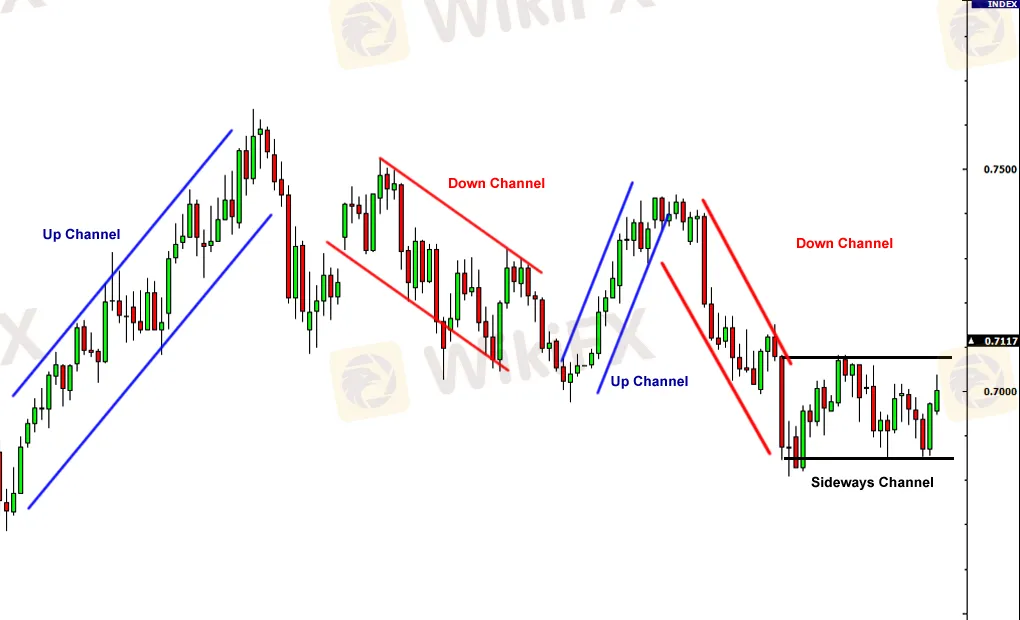简体中文
繁體中文
English
Pусский
日本語
ภาษาไทย
Tiếng Việt
Bahasa Indonesia
Español
हिन्दी
Filippiiniläinen
Français
Deutsch
Português
Türkçe
한국어
العربية
Channels of Representation
Abstract:We may establish a "channel" by extending the trend line hypothesis and drawing a parallel line at the same angle as the uptrend or downturn.
We may establish a “channel” by extending the trend line hypothesis and drawing a parallel line at the same angle as the uptrend or downturn.
ESPN, National Geographic, and Cartoon Network aren't involved in this.
Rather than television stations, these are trend channels, often known as price channels.
This does not, however, imply that you should leave as if it were a commercial break. Tiger King and Catching Up with the Kardashians aren't the only shows on TV that are enjoyable to watch.
Trend channels are a technical analysis technique that may be used to find attractive buy and sell opportunities.
Resistance is represented by the upper trend line, while support is represented by the lower trend line. As a result, channel tops and bottoms may act as potential support and resistance areas.
Negative slope (down) trend channels are regarded bearish, whereas positive slope (up) trend channels are considered bullish.

To create an ascending (ascending) channel, just draw a parallel line at the same angle as an uptrend line and move it to a place where it contacts the most recent high. This should be done concurrently with the trend line creation.
Simply draw a parallel line at the same angle as the downtrend line, then move it to a location where it hits the most recent valley to construct a down (descending) channel. This should be done concurrently with the trend line creation.
This may be utilised as a purchasing location when prices reach the LOWER trend line.
Prices may be utilised as a selling area when they reach the UPPER trend line.
Trend Channels: What Are They and How Do You Use Them?
There are three different kinds of channels:,, and.
Higher highs and lower lows indicate an ascending channel.
Lower highs and lower lows characterise the descending channel.
Channel is horizontal (ranging)
An ascending channel is referred to as a “rising channel,” while a descending channel is referred to as a “falling channel” by certain traders. Millenials are the most probable group.
Things to keep in mind while constructing trend lines:
Both trend lines must be parallel to each other when building a trend channel.
The base of the trend channel is frequently considered a “buy zone,” while the top is considered a “sell zone.”
AS WITH TREND LINES, DO NOT FORCE THE PRICE ON THE CHANNELS YOU DRAW!
A channel border that slants one way while the corresponding channel boundary slants the other way is improper and might lead to bad trades.
Instead of a trend channel, the chart pattern becomes a triangle. (I'll go into more detail about this later.)
On the other hand, trend channels do not have to be precisely parallel. The channel does not have to include 100 percent of the price movement.
When trading, many traders make the mistake of only searching for textbook price patterns.
They overlook vital price action information and ignore other crucial indications.
Take a look at the diagrams below to see how the channels are drawn...

Is it possible that they are flawless?
Price action that fits neatly inside two perfectly parallel trend lines is highly uncommon, therefore waiting for textbook examples that are picture-perfect will not help you in the real world.
It's the equivalent of looking for the ideal guy or lady in the real world. Don't let go until you've found him or her.
Disclaimer:
The views in this article only represent the author's personal views, and do not constitute investment advice on this platform. This platform does not guarantee the accuracy, completeness and timeliness of the information in the article, and will not be liable for any loss caused by the use of or reliance on the information in the article.
WikiFX Broker
Currency Calculator






